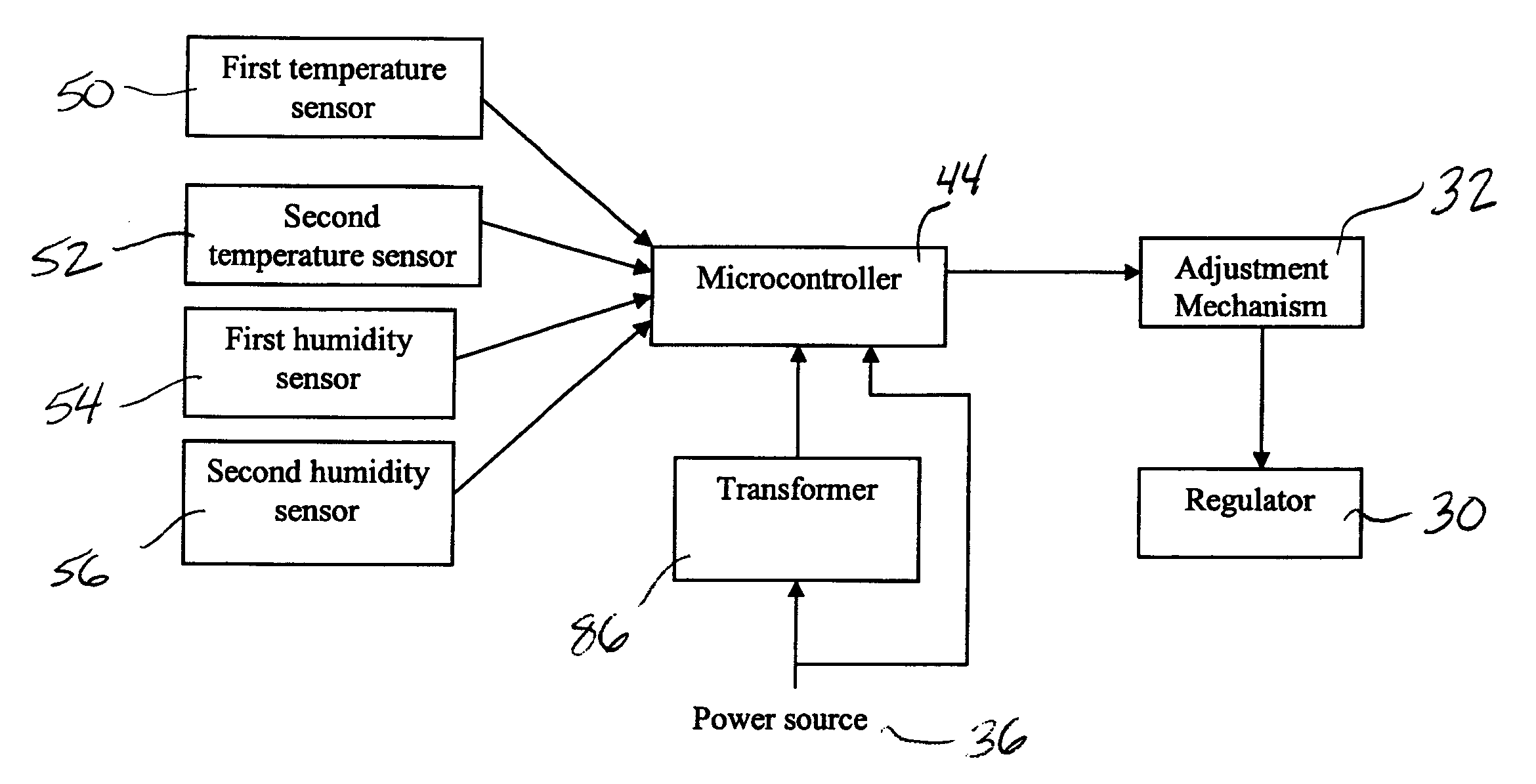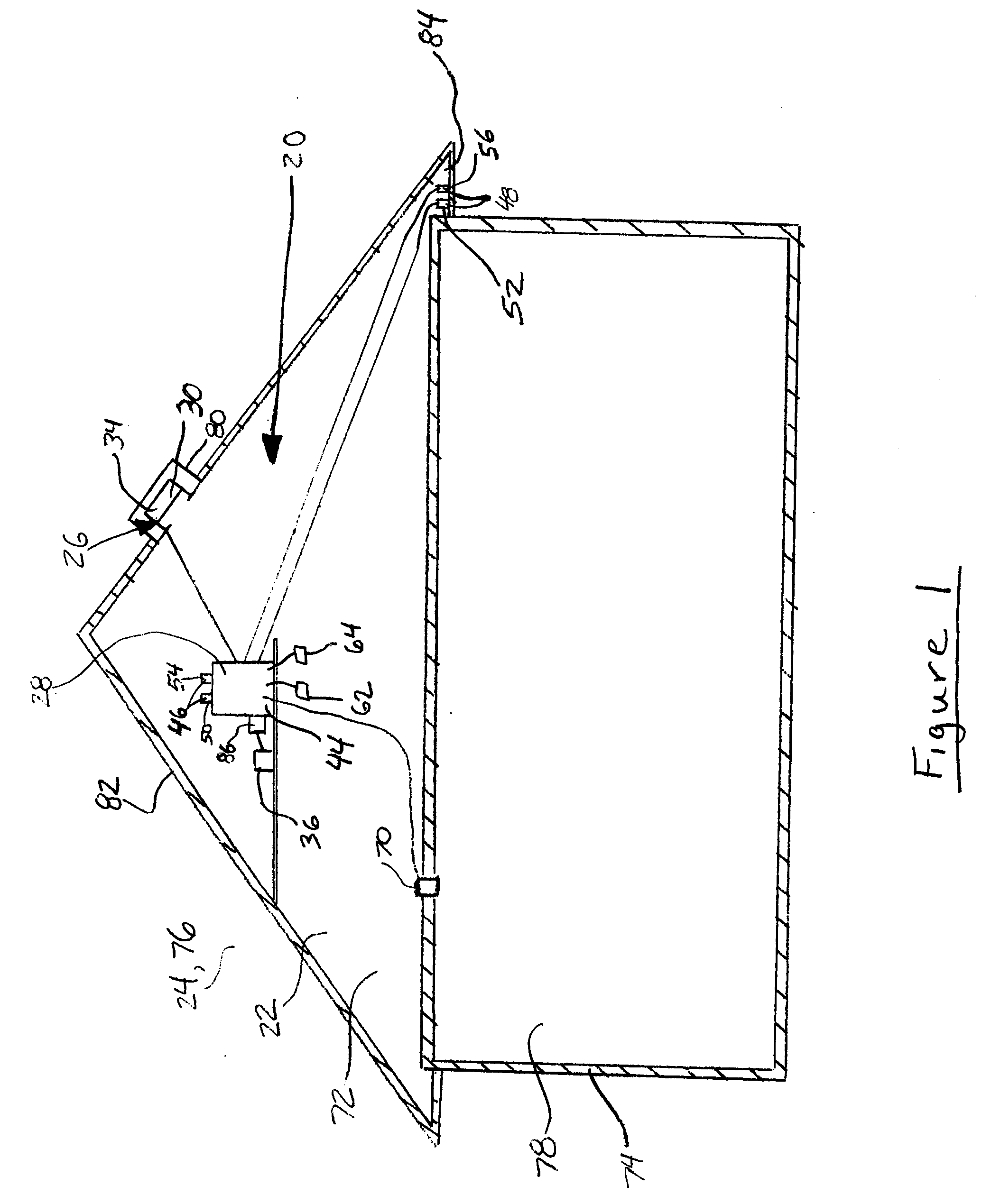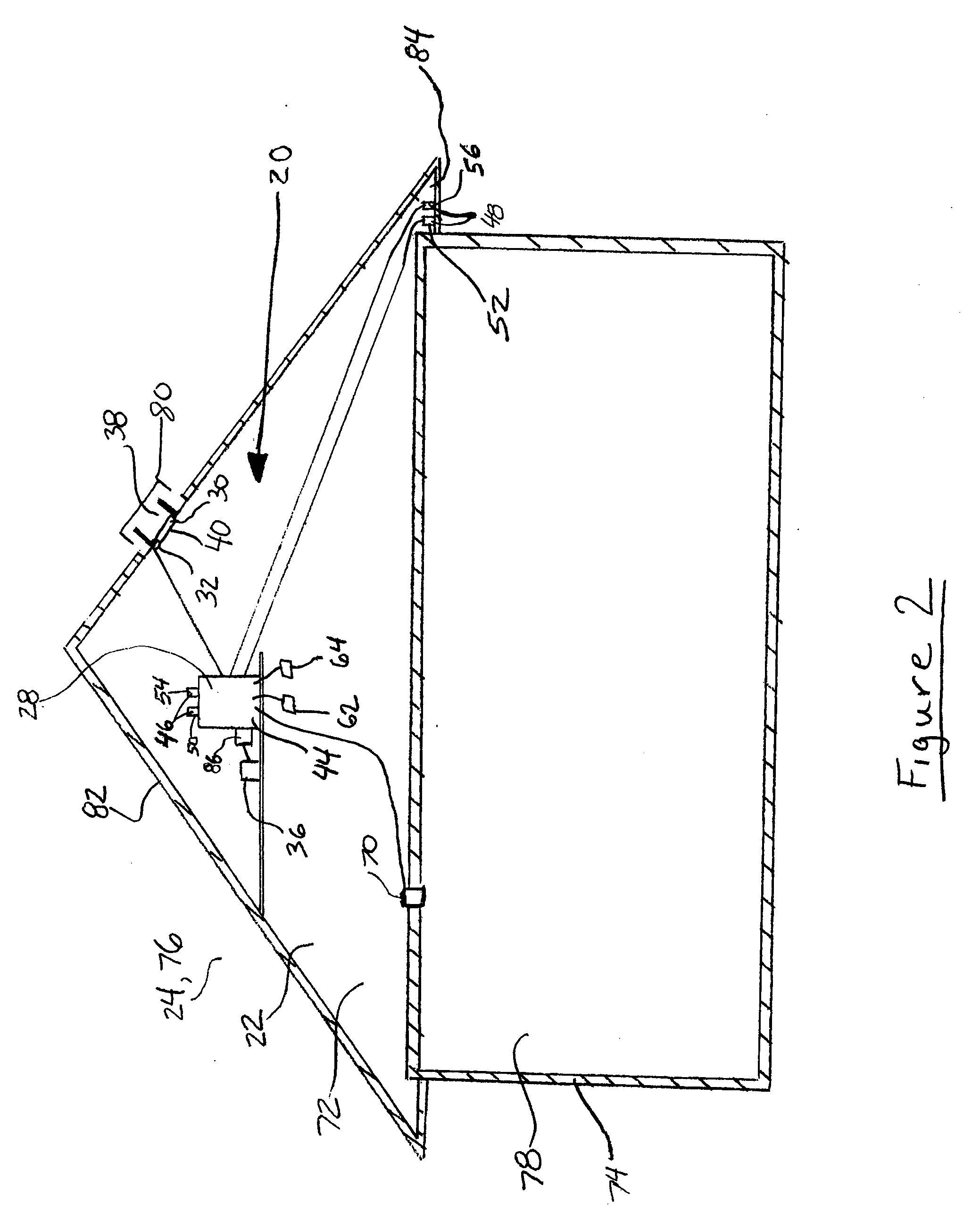Ventilation system and method of using the ventilation system
a ventilation system and ventilation system technology, applied in ventilation systems, heating types, instruments, etc., can solve problems such as inefficiency of power vents, damage to roofs, water intrusion and mold growth,
- Summary
- Abstract
- Description
- Claims
- Application Information
AI Technical Summary
Benefits of technology
Problems solved by technology
Method used
Image
Examples
first embodiment
[0037] In a first embodiment, as shown in FIG. 1, the first space 22 is further defined as an attic 72 of a building 74, such as a residential or commercial building 74, and the second space 24 is further defined an exterior 76 of the building 74. The ventilation system 20 may be mounted in the attic 72 of a building 74. In such a configuration, the ventilation system 20 may regulate the temperature, humidity, and / or pressure of the attic 72 relative to the temperature, humidity, and / or pressure of the air of the exterior 76 of the building 74. The ventilation system 20 may be installed during the construction of a building 74 or may be installed to currently existing buildings 74. It should be appreciated that the ventilation system 20 is not limited to residential or commercial buildings 74, but may be mounted in any structure to control the temperature, humidity, and / or pressure of the interior 78 of the structure relative to the temperature and humidity of the air of the exterio...
second embodiment
[0054] In the second embodiment, the microcontroller 44 may be connected by electrical wire to the regulator 30 and the sensors. Alternatively, the microcontroller 44 may communicate wirelessly with the regulator 30 and the sensors. The transformer 86 may be disposed between the power source 36 and the microcontroller 44 such that the transformer 86 provides a low voltage, e.g., 9V, to the microcontroller 44 to operate the microcontroller 44. The power source 36 may be, e.g., a 120V AC duplex outlet. The transformer 86 may be connected by electrical wire to the microcontroller 44. Alternatively, the microcontroller 44 may be directly connected to the power source 36.
[0055] The microcontroller 44 controls the regulator 30 depending upon the temperature of the air in the lower level 90 in relation to the temperature of the air of the upper level 88. For example, the microcontroller 44 may control electrical current supplied to the adjustment device such that the adjustment device adju...
PUM
| Property | Measurement | Unit |
|---|---|---|
| voltage | aaaaa | aaaaa |
| temperature | aaaaa | aaaaa |
| humidity | aaaaa | aaaaa |
Abstract
Description
Claims
Application Information
 Login to View More
Login to View More - R&D
- Intellectual Property
- Life Sciences
- Materials
- Tech Scout
- Unparalleled Data Quality
- Higher Quality Content
- 60% Fewer Hallucinations
Browse by: Latest US Patents, China's latest patents, Technical Efficacy Thesaurus, Application Domain, Technology Topic, Popular Technical Reports.
© 2025 PatSnap. All rights reserved.Legal|Privacy policy|Modern Slavery Act Transparency Statement|Sitemap|About US| Contact US: help@patsnap.com



